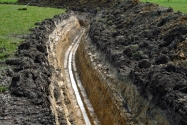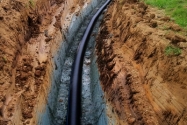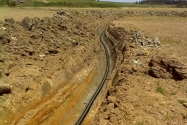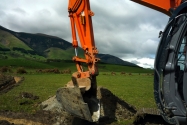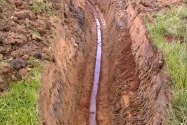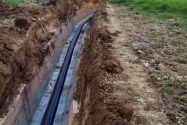Farm Drainage
When digging drains to flat gradients, levels need to be taken to assure minimum efficient flows are maintained and assure minimum cover at lower points.
To achieve this we use lasers to survey the area, and then calculate a grade. We can cut a designed grade to a minimum efficient fall and can work out how deep we will be when we dig through that low spot, or if we can pick up that old tile drain that is holding water up stream.
Most drains installed today are plastic perforated pipe. Smooth bore perforated pipe is very flow efficient. Generally farmers tend to use corrugated Bore on sloping country and smooth bore on flatter grades. You can enhance the drawing ability of plastic pipe by placing barley or oat straw, or ultimately any washed aggregates. After that try to backfill using dry as possible topsoil.
It pays to maintain sufficient depth to allow the ground to draw . Shallow drains don’t tend to draw as well.
Another option is to install a tyre sump at problem areas over the drain consisting of a few car tyres stacked over the newly installed drain up close to the surface. Then fill with washed aggregate. This will allow a point for high catchment areas to drain quicker and prevent damage to soil.
For drains that are put under pressure in wet conditions, venting is a good option and will enhance the flow allowing the drain to handle more water.

